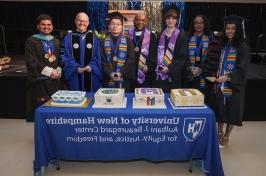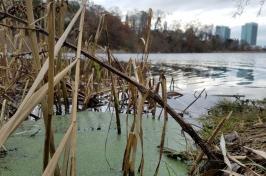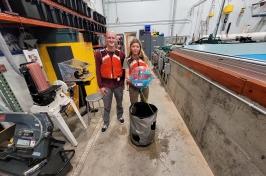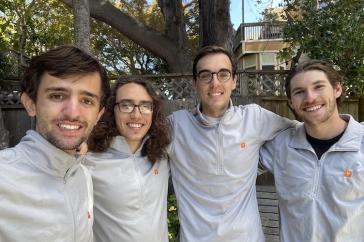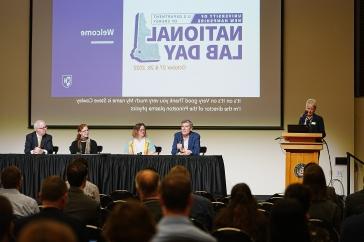
将创新的建模技术与老式的侦查相结合, researchers from the University of New Hampshire have shed new light on the mystery of pre-European archaeological monument sites in Michigan, 尽管他们正在研究的大部分遗址已经不复存在. The work, published recently in the journal PNAS, provides an important new tool in a field where many monuments have been lost forever to modern development.
研究人员是人类学副教授 Meghan Howey 地球与地理空间科学副教授 Michael Palace, both of UNH, and Crystal McMichael of the University of Amsterdam and formerly a postdoctoral researcher with Palace — sought to better understand the roles of two different kinds of earthen constructions in Michigan. 这些土丘和圆形土方围栏, 它们通常可以追溯到接触前晚期的1,000 – 1,600 A.D., are common across the eastern U.S. 却让一代又一代的人类学家感到困惑.
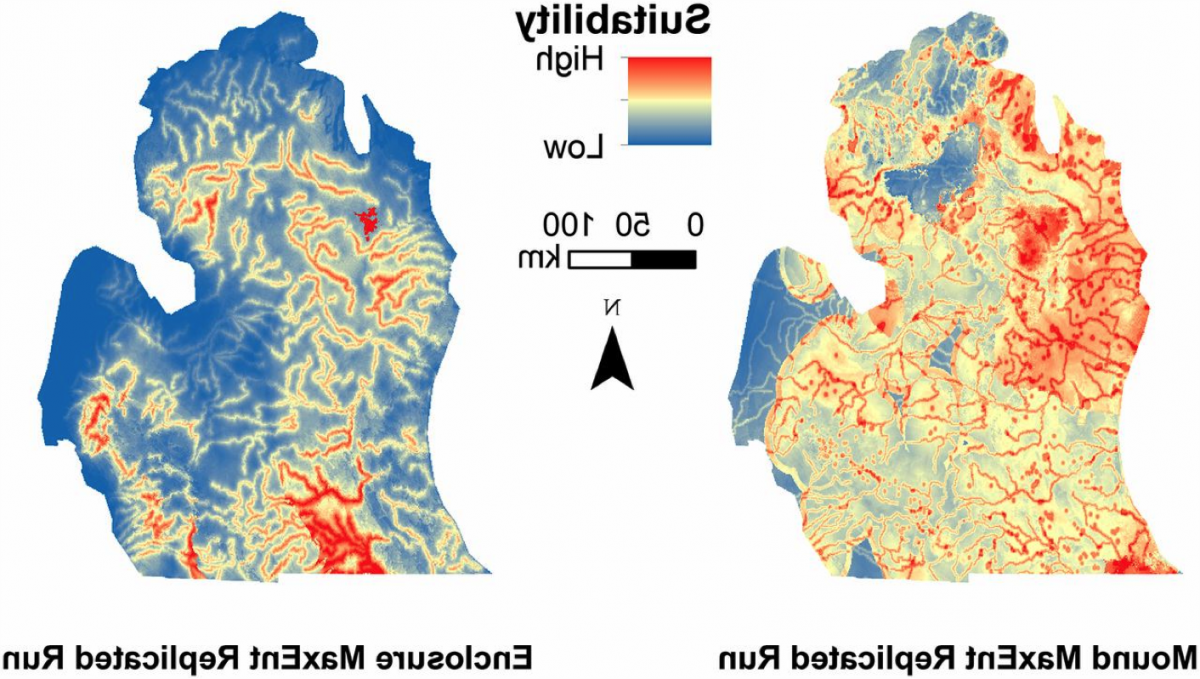
“Understanding how such reconfigurations of the landscape affect societal development is a grand challenge for archaeology,” says Howey, who is the James H. 海耶斯和克莱尔·肖特·海耶斯人文学科教授. “Our goal was to identify which spatial and environmental variables were important to the placement of these monuments.”
利用一种叫做最大熵的建模技术, or MaxEnt, borrowed from landscape ecology, the researchers determined that the two types of monuments occupied distinct niches in the landscape. Burial mounds were located near inland lakes, probably to serve local needs like food, shelter and community, while circular earthwork enclosures — some larger than football fields — were located near rivers.
“这些围栏成为了这些共享的仪式空间. 它们建在河边,所以很多人都可以去,” says Howey, adding that canoe travel along Michigan’s major rivers enabled the ancestral Anishinaabeg people to transport themselves and their goods long distances.
“Understanding how such reconfigurations of the landscape affect societal development is a grand challenge for archaeology.”
It was the researchers’ interdisciplinary approach that unlocked some secrets to these monuments, up to 80 percent of which have been destroyed. Howey, who has studied Late Precontact monuments in Michigan for more than a decade, pored through archaeological archives to create a database of mounds and enclosures documented in Michigan. Of the 60 enclosure locations and 261 mound locations her deep archival dive revealed, 据估计,现在只剩下13个围场和45个土丘.
While using data that scientists call "presence-only" — working with just what you know to exist — may be challenging to archaeologists, “野外生物学家经常处理这种只存在的情况," says Palace, a remote sensing and geospatial science specialist in UNH’s department of Earth science and 地球、海洋和空间研究所(EOS). “你听不到鸟的叫声并不意味着鸟不在那里." He suggested harnessing the power of MaxEnt, 输入地形等环境值, temperature, rainfall and distance from lakes or rivers from the existing and archival monuments to model "habitats" for additional monuments.
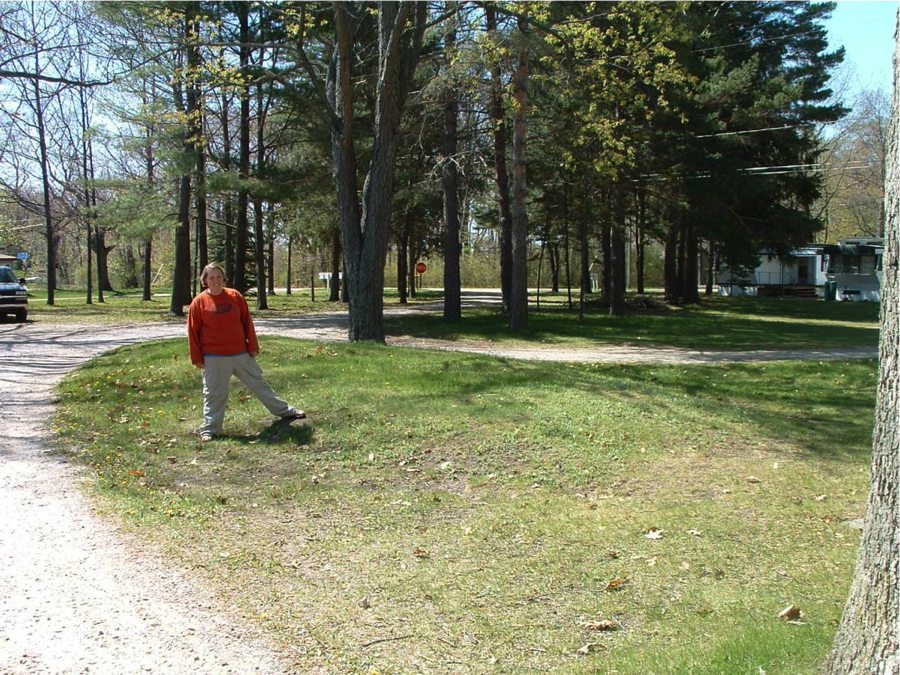
“当我们把纪念碑建筑的文化过程变成一种‘物种’时,, you could see the patterns pop," says Howey, 他是EOS为数不多的社会科学家之一. "It was really cool to show you can go to limited archival records and tell a new story about the past from these imperfect, limited datasets. It was this amazing convergence of ideas, going to that macro landscape ecology level."
Indeed, Howey recalls that it was McMichael — not an anthropologist but a paleoecologist — who first connected burial mounds to lakes and enclosures to rivers after reviewing the data. 豪伊说:“跨学科的工作能让你走出狭隘的视野.
Palace, who studied archaeology as an undergraduate, echoes Howey’s interdisciplinary zeal. "I’ve immensely enjoyed the chance to work across disciplines and dip my foot in the archaeological waters," he says. The two will expand this modeling approach, supported by a NASA space archaeology grant to look at the rise of maize in Michigan inland lakes, to the entire Great Lakes region. 豪伊称这是一个未被充分研究和重视的考古领域.
And their innovative use of MaxEnt for answering archaeological riddles in the absence of existing sites is gaining in popularity. "As development continues across the globe, and more and more ancient sites, including monuments, are erased by plows and heavy machinery, 也许有一天,档案数据会成为唯一幸存的信息," says Howey. "Modeling approaches like MaxEnt, which work well with limited data sets, will become an increasingly important tool for archaeologists to explore the past."
这项研究是由美国宇航局太空考古和一个 American Council of Learned Societies Digital Innovation Fellowship.
-
Written By:
Beth Potier | UNH Marketing | beth.potier@wxyxsteel.com | 2-1566














